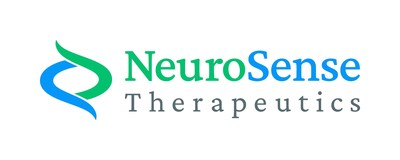NeuroSense: PrimeC Produces Statistically Significant Reductions in Alzheimer's Disease Biomarkers
NeuroSense (NASDAQ: NRSN) reported Phase‑2b plasma biomarker results for PrimeC on October 6, 2025 showing statistically significant reductions in multiple Alzheimer's‑linked microRNAs. Key measured reductions from baseline include miR‑21‑5p (p=0.003), miR‑146a‑5p (p=0.007), miR‑let‑7e‑5p (p=0.006) and miR‑let‑7a‑5p (p=0.028), while placebo showed no significant changes over time. The company said these miRNA changes reflect reduced neuroinflammatory and neurodegenerative activity and support PrimeC's potential as a disease‑modifying therapy. NeuroSense indicated the data will inform design of a follow‑on Alzheimer's study and that Phase‑3 readiness for PrimeC in ALS remains ongoing.
NeuroSense (NASDAQ: NRSN) ha riportato risultati di biomarcatori plasmatici di fase 2b per PrimeC il 6 ottobre 2025, mostrando riduzioni statisticamente significative in molte microRNA associate all'Alzheimer. Le principali riduzioni rispetto alla linea di base includono miR‑21‑5p (p=0,003), miR‑146a‑5p (p=0,007), miR‑let‑7e‑5p (p=0,006) e miR‑let‑7a‑5p (p=0,028), mentre il gruppo placebo non ha mostrato cambiamenti significativi nel tempo. L’azienda ha detto che tali cambiamenti nei miRNA riflettono una riduzione dell’attività neuroinfiammatoria e neurodegenerativa e sostengono il potenziale di PrimeC come terapia modificante la malattia. NeuroSense ha indicato che i dati informeranno la progettazione di uno studio di follow‑on sull’Alzheimer e che la readiness per la fase 3 di PrimeC in ALS rimane in corso.
NeuroSense (NASDAQ: NRSN) informó resultados de biomarcadores plasmáticos de fase 2b para PrimeC el 6 de octubre de 2025, mostrando reducciones estadísticamente significativas en varios microARN asociados al Alzheimer. Las reducciones clave respecto al punto de partida incluyen miR‑21‑5p (p=0,003), miR‑146a‑5p (p=0,007), miR‑let‑7e‑5p (p=0,006) y miR‑let‑7a‑5p (p=0,028), mientras que el grupo placebo no mostró cambios significativos con el tiempo. La empresa afirmó que estos cambios en los miRNA reflejan una reducción de la neuroinflamación y la neurodegeneración y respaldan el potencial de PrimeC como terapia que modifica la enfermedad. NeuroSense indicó que los datos informarán el diseño de un estudio de seguimiento sobre Alzheimer y que la preparación para un Phase‑3 en ELA continúa.
NeuroSense (NASDAQ: NRSN)은 2025년 10월 6일 PrimeC에 대한 2b상 혈장 바이오마커 결과를 발표했고, 알츠하이머와 연관된 여러 마이크로RNA에서 통계적으로 유의한 감소를 보였습니다. 기준선 대비 주요 감소는 miR‑21‑5p (p=0.003), miR‑146a‑5p (p=0.007), miR‑let‑7e‑5p (p=0.006) 및 miR‑let‑7a‑5p (p=0.028)이며, 위약군은 시간에 따른 유의미한 변화를 보이지 않았습니다. 회사는 이러한 miRNA 변화가 신경염증 및 신경퇴행 활동의 감소를 반영하고 PrimeC의 질병 수정 치료 가능성을 뒷받침한다고 말했습니다. NeuroSense는 데이터가 알츠하이머에 대한 팔로우온 연구 설계에 정보를 제공할 것이며 PrimeC의 ALS에서의 3상 준비는 계속 진행 중임을 시사했습니다.
NeuroSense (NASDAQ: NRSN) a publié le 6 octobre 2025 des résultats de biomarqueurs plasmatiques de Phase 2b pour PrimeC, montrant des réductions statistiques significatives de plusieurs microARN liés à la maladie d'Alzheimer. Les réductions clés par rapport à la ligne de base incluent miR‑21‑5p (p=0,003), miR‑146a‑5p (p=0,007), miR‑let‑7e‑5p (p=0,006) et miR‑let‑7a‑5p (p=0,028), tandis que le groupe placebo n'a montré aucun changement significatif au fil du temps. L'entreprise a déclaré que ces changements de miRNA reflètent une réduction de l'activité neuroinflammatoire et neurodégénérative et soutiennent le potentiel de PrimeC comme thérapie modifiant la maladie. NeuroSense a indiqué que les données informeront la conception d'une étude de suivi sur Alzheimer et que la préparation au stade 3 pour PrimeC dans la SLA est en cours.
NeuroSense (NASDAQ: NRSN) berichtete am 6. Oktober 2025 über Phase-2b-Plasmasignale für PrimeC, die statistisch signifikante Reduktionen mehrerer mit Alzheimers in Zusammenhang stehender MicroRNAs zeigen. Wichtige Messreduktionen gegenüber dem Ausgangswert umfassen miR‑21‑5p (p=0,003), miR‑146a‑5p (p=0,007), miR‑let‑7e‑5p (p=0,006) und miR‑let‑7a‑5p (p=0,028), während Placebo im Zeitverlauf keine signifikanten Veränderungen zeigte. Das Unternehmen sagte, dass diese miRNA‑Änderungen eine verringerte neuroinflammatorische und neurodegenerative Aktivität widerspiegeln und das Potenzial von PrimeC als krankheitsmodifizierende Therapie unterstützen. NeuroSense gab an, dass die Daten das Design einer Folgestudie zum Alzheimer unterstützen werden und dass die Phase‑3‑Bereitschaft für PrimeC bei ALS weiterhin läuft.
NeuroSense (NASDAQ: NRSN) أبلغت عن نتائج مؤشرات حيوية للدم في المرحلة 2b لـ PrimeC في 6 أكتوبر 2025، مع انخفاضات ذات دلالة إحصائية في عدة microRNAs مرتبطة بمرض الزهايمر. تشمل الانحدارات الرئيسية مقارنة بالخط الأساسي miR‑21‑5p (p=0.003)، miR‑146a‑5p (p=0.007)، miR‑let‑7e‑5p (p=0.006) و miR‑let‑7a‑5p (p=0.028)، بينما لم يظهر الدملي الشبيه بالدواء تغييرات كبيرة مع مرور الوقت. قالت الشركة إن هذه التغييرات في miRNA تعكس انخفاض النشاط العصبي الالتهابي والتدهور العصبي وتدعم إمكانية PrimeC كعلاج معدّل للمرض. أشارت NeuroSense إلى أن البيانات ستوجه تصميم دراسة متابعة للزهايمر وأن الاستعداد للمرحلة-3 لـ PrimeC في ALS ما زال جارياً.
NeuroSense (NASDAQ: NRSN) 在2025년10월6일公布了 PrimeC 的 Phase-2b 血浆生物标志物结果,显示多种与阿尔茨海默病相关的微RNA 的统计学显著下降。基线相比的主要下降包括 miR‑21‑5p (p=0.003)、miR‑146a‑5p (p=0.007)、miR‑let‑7e‑5p (p=0.006) 和 miR‑let‑7a‑5p (p=0.028),而安慰剂组随时间未显示显著变化。公司表示,这些 miRNA 变化反映了神经炎症和神经退行性活动的降低,并支持 PrimeC 作为一种疾病修饰治疗的潜力。NeuroSense 表示这些数据将为后续阿尔茨海默病研究的设计提供信息,并且 PrimeC 在ALS的阶段-3就绪仍在进行中。
- miR‑21‑5p reduced vs baseline with p=0.003
- miR‑146a‑5p reduced vs baseline with p=0.007
- miR‑let‑7e‑5p reduced vs baseline with p=0.006
- miR‑let‑7a‑5p reduced vs baseline with p=0.028
- Data will inform design of a follow‑on Alzheimer’s study
- Release reports biomarker changes only; no clinical efficacy endpoints disclosed
- Placebo group showed no significant biomarker change over time (no comparative clinical benefit shown here)
Insights
PrimeC showed statistically significant plasma microRNA reductions in Phase‑2b, signalling biomarker-level target engagement but not clinical benefit.
PrimeC produced significant reductions in several Alzheimer's disease–associated microRNAs (miR-146a-5p p=0.007, miR-21-5p p=0.003, miR-let-7a-5p p=0.028, miR-let-7e-5p p=0.006) measured as change from baseline in the Phase‑2b PARADIGM plasma samples. These miRNAs are described as linked to neuroinflammation, amyloid/tau pathology and synaptic dysfunction, so the findings indicate biological pathway modulation and clear pharmacodynamic activity on circulating biomarkers.
Key dependencies and risks include whether plasma miRNA changes translate to meaningful central nervous system effects and clinical benefit, and whether the biomarker signal replicates in independent cohorts. The announcement does not report cognitive or functional outcomes, magnitude of effect beyond p-values, or durability of change. Watch for correlation analyses between the reported miRNA changes and clinical endpoints, details on effect size and variability, and the design and timing of any follow-on Alzheimer's study; the company also notes ongoing work on Phase‑3 readiness in ALS which may affect development timelines.

Key Highlights -
PrimeC treatment significantly reduced several AD-associated microRNAs, including miR-146a-5p (p=0.007), miR-21-5p (p=0.003), miR-let-7a-5p (p=0.028) and miR-let-7e-5p (p=0.006), measured as change from baseline, while no significant change was observed in the placebo group over time.
MicroRNAs are master regulators of gene expression. The miRNAs described above are associated with neuroinflammation, amyloid and tau pathology, synaptic dysfunction which relate to a cognitive decline.
By lowering these biomarkers, PrimeC demonstrated the ability to directly target biological pathways central to AD progression, supporting its potential as a disease-modifying therapy.
Alon Ben-Noon, Chief Executive Officer of NeuroSense, said:
"These biomarker data provide a clearer view of how our novel combination modulates biological pathways implicated in Alzheimer's disease. The magnitude and consistency of the observed miRNA changes are highly encouraging and, together with our Phase 2 clinical findings, will inform a design of follow-on AD study, all while we continue to advance PrimeC's Phase 3 readiness program in ALS."
About Alzheimer's Disease
Alzheimer's disease (AD) is a progressive neurodegenerative disorder and the leading cause of dementia worldwide, affecting more than 30 million people globally. AD is characterized by memory loss, cognitive decline, and behavioral changes, and currently has no cure. Existing therapies provide only limited symptomatic relief, leaving a significant unmet need for disease-modifying treatments that can slow or halt progression. Given the complexity of AD, approaches that target multiple disease mechanisms simultaneously, such as PrimeC, hold potential to deliver meaningful therapeutic advances for patients and their families.
About PrimeC
PrimeC, NeuroSense's lead drug candidate, is a novel extended-release oral formulation composed of a unique fixed-dose combination of two FDA-approved drugs: ciprofloxacin and celecoxib. PrimeC is designed to synergistically target several key mechanisms of ALS and AD, that contribute to neuron degeneration, inflammation, iron accumulation and impaired ribonucleic acid ("RNA") regulation to potentially inhibit the progression of ALS and AD.
About PARADIGM
PARADIGM is a prospective, multinational, randomized, double-blind, placebo-controlled Phase 2b (NCT05357950) clinical trial of PrimeC in ALS. The trial included 68 participants living with ALS in
About NeuroSense
NeuroSense Therapeutics, Ltd. is a clinical-stage biotechnology company focused on discovering and developing treatments for patients suffering from debilitating neurodegenerative diseases. NeuroSense believes that these diseases, which include amyotrophic lateral sclerosis (ALS), Alzheimer's disease and Parkinson's disease, among others, represent one of the most significant unmet medical needs of our time, with limited effective therapeutic options available for patients to date. Due to the complexity of neurodegenerative diseases and based on strong scientific research on a large panel of related biomarkers, NeuroSense's strategy is to develop combined therapies targeting multiple pathways associated with these diseases.
For additional information, we invite you to visit our website and follow us on LinkedIn, YouTube and X. Information that may be important to investors may be routinely posted on our website and these social media channels.
Forward-Looking Statements
This press release contains "forward-looking statements" that are subject to substantial risks and uncertainties. All statements, other than statements of historical fact, contained in this press release are forward-looking statements. Forward-looking statements contained in this press release may be identified by the use of words such as "anticipate," "believe," "contemplate," "could," "estimate," "expect," "intend," "seek," "may," "might," "plan," "potential," "predict," "project," "target," "aim," "should," "will" "would," or the negative of these words or other similar expressions, although not all forward-looking statements contain these words. Forward-looking statements are based on NeuroSense Therapeutics' current expectations and are subject to inherent uncertainties, risks and assumptions that are difficult to predict and include statements regarding the timing of regulatory filings, meetings and regulatory decisions. Further, certain forward-looking statements are based on assumptions as to future events that may not prove to be accurate. The future events and trends may not occur and actual results could differ materially and adversely from those anticipated or implied in the forward looking statements. These risks include the uncertainty regarding outcomes and the timing of current and future clinical trials; timing for reporting data; the ability of NeuroSense to remain listed on Nasdaq; and other risks and uncertainties set forth in NeuroSense's filings with the Securities and Exchange Commission (SEC). You should not rely on these statements as representing our views in the future. More information about the risks and uncertainties affecting NeuroSense is contained under the heading "Risk Factors" in the Annual Report on Form 20-F filed with the Securities and Exchange Commission on April 7, 2025 and NeuroSense's subsequent filings with the SEC. Forward-looking statements contained in this announcement are made as of this date, and NeuroSense undertakes no duty to update such information except as required under applicable law.
Logo: https://mma.prnewswire.com/media/1707291/NeuroSense_Therapeutics_Logo.jpg
![]() View original content:https://www.prnewswire.com/news-releases/neurosense-primec-produces-statistically-significant-reductions-in-alzheimers-disease-biomarkers-302575654.html
View original content:https://www.prnewswire.com/news-releases/neurosense-primec-produces-statistically-significant-reductions-in-alzheimers-disease-biomarkers-302575654.html
SOURCE NeuroSense







